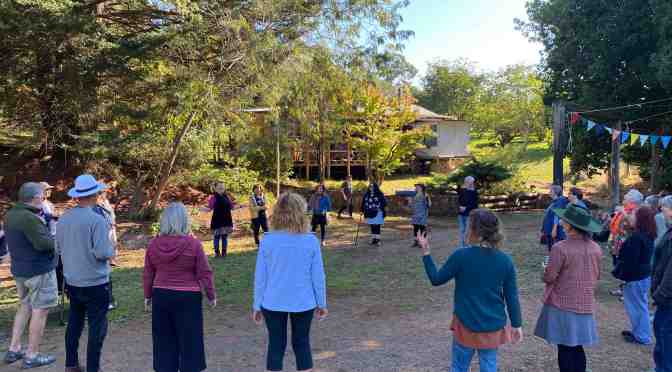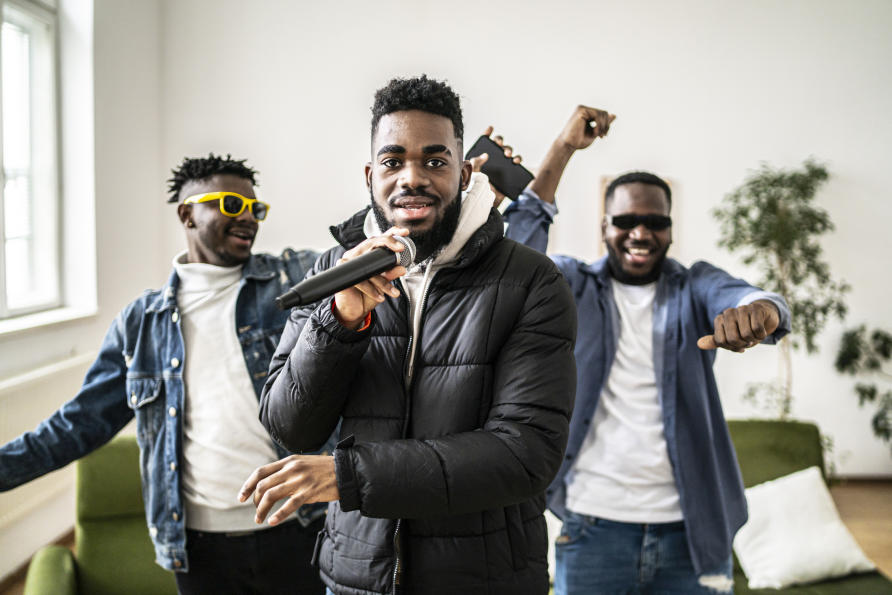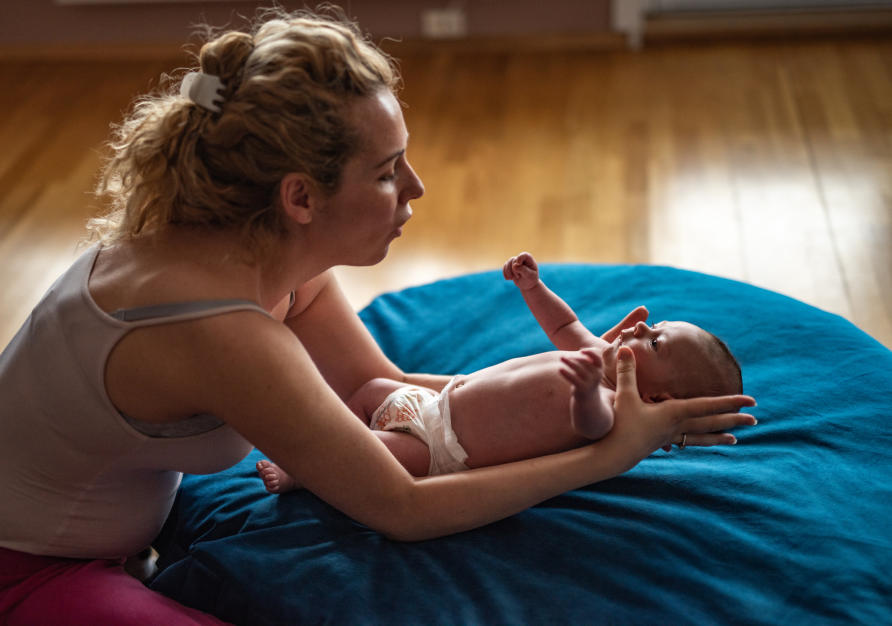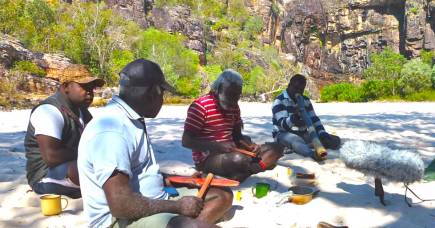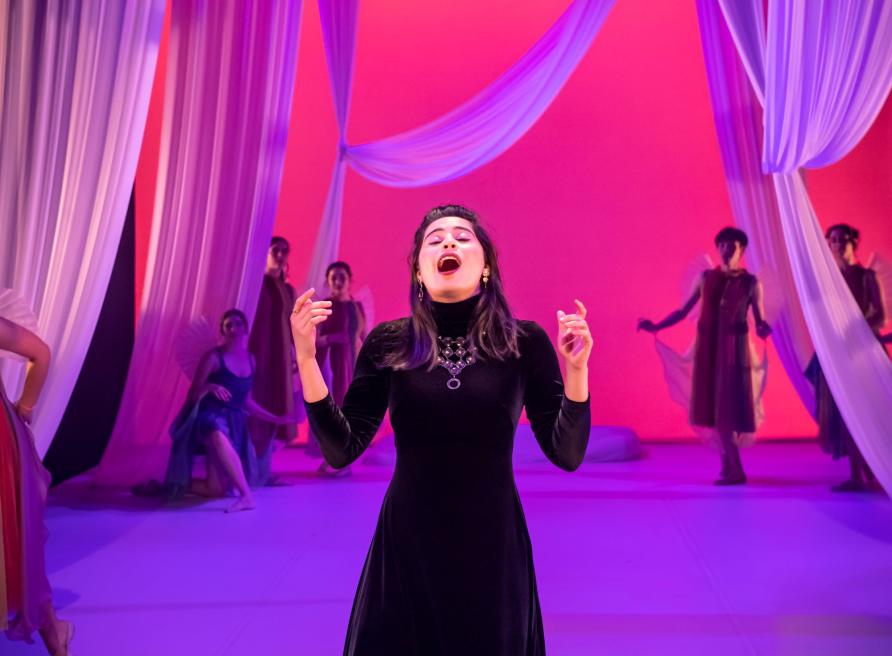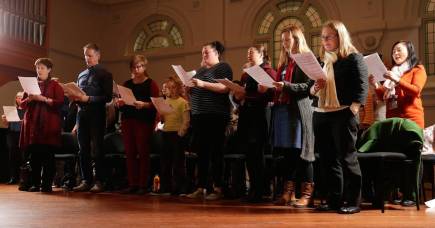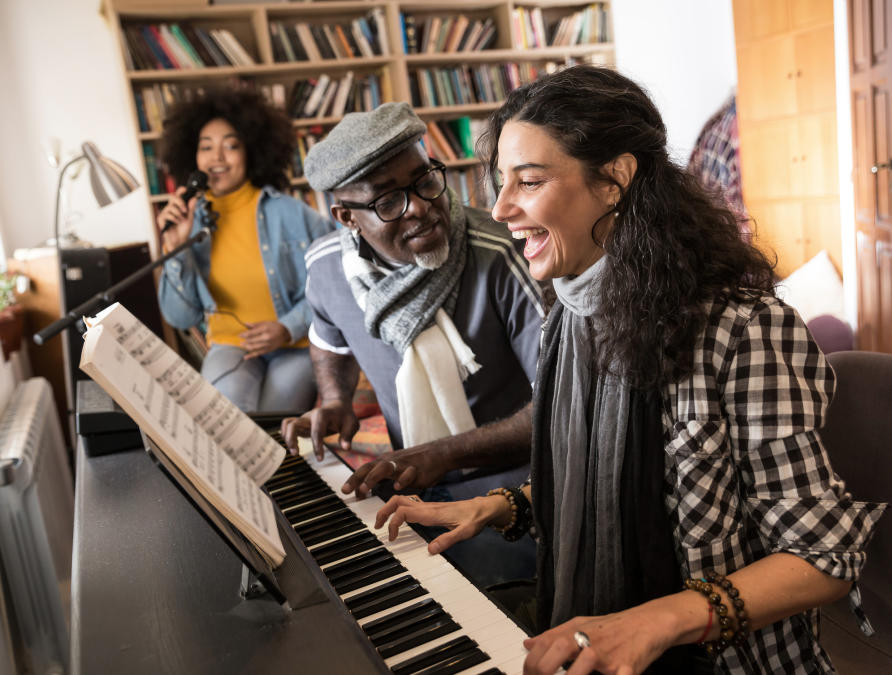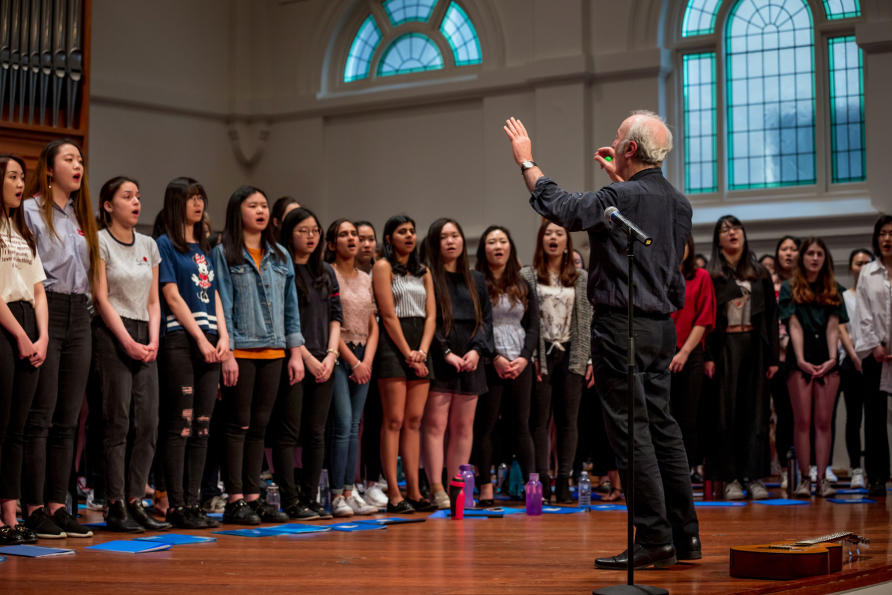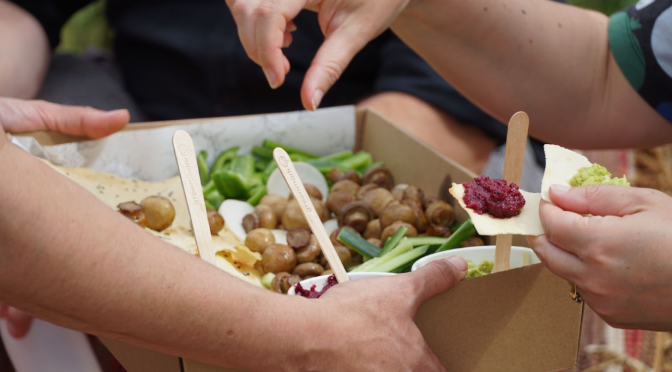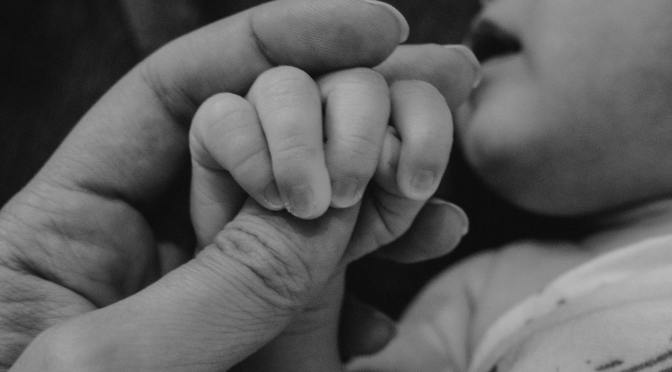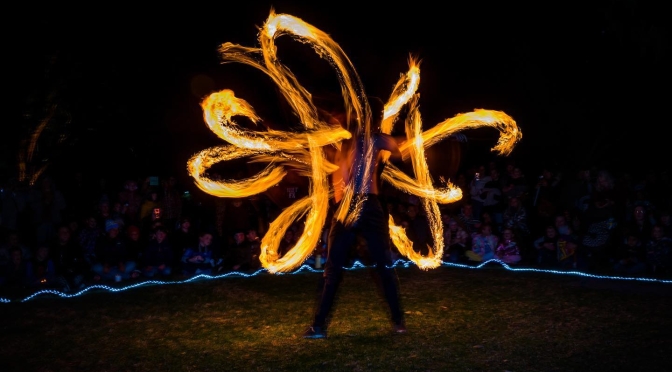By Jane York
When I started working with CMVic as the interim Local Catalyst for Inner West Victoria I didn’t expect to spend my Saturday line dancing to the 1990s pop country hit Achy Breaky Heart, but that’s exactly how last month’s Cairnlea Community Sing-Along event kicked off (quite literally)!
While not formally on the event run-sheet, one of the group leaders Antoinette Camilleri casually mentioned that it’s a popular ice-breaker with her Cairnlea Sing-Along Group and everyone immediately agreed we had to see it in action. It may not be the sort of activity you first think of when you think about choirs, but this fun and super silly warm-up, full of hip bumps, giggles and missed steps, was a perfect example of the types of things community music leaders do to keep their groups engaged and bring them into the space. For the types of groups this Community Sing-Along event was targeting, togetherness was the priority over formal introductions and extensive vocal warm-ups.

The concept of the Cairnlea Community Sing-Along sprang out of engagement and research throughout Melbourne’s Western suburbs and beyond in the second half of 2023 as part of CMVic’s Growing Community Music project. It became clear that there was a significant portion of participatory singing happening that didn’t fit neatly into traditional understandings of community choirs. And while those of us working in the space understand ‘community choir’ is a broad term that involves many operational models, sizes and abilities, this cohort of groups had some things in common…
- They strongly prioritise participation and connection over musical output
- They may not identify as a choir, instead a singing or sing-along group
- They may not meet once a week in the evening, some meet fortnightly and during the day
- They rarely use sheet music and mostly sing in unison or rounds
- They are often operating out of a neighbourhood, community house or health centre
- Entry is either free or affordable with sliding scales
- They are sometimes led by volunteers who may not identify as career singing leaders
- They may not have the size, reliable attendance or musical capacity to perform on their own outside their regular meeting time
These types of groups gather all across Victoria and serve their local communities, many of which could be described as disadvantaged or marginalised and at risk of social isolation. These group sessions are designed for maximum ease of participation, for people to be able to rock up, join in and experience joy and connection in a low pressure way. Some of them, like the Cairnlea Sing-Along group, sing to backing tracks with their leader taking requests and finishing on What A Wonderful World to “combat the blues”! During our sing-along event Elly McKinnon from With One Voice Sunbury leads us in a round but first asks if anyone doesn’t know what that means; one person doesn’t and she warmly explains. No prior musical knowledge is assumed and no one is shamed or made to feel unworthy of joining in.
The aim of the Cairnlea Community Sing-Along event was to bring together some of these similar types of groups in a relaxed format that addresses the barriers to them engaging in other performance, workshop or development opportunities. Over 30 singers joined us on the day from 7 different groups, with leaders from our 3 host groups teaching and leading a few of their groups favourite songs for the whole room to sing together.
Preparing for performances, working on tricky repertoire and having the size and confidence to sing parts is beyond the reach of many of these groups. The main goal of their regular sessions is providing access to everyone to enjoy singing and nothing beyond that. When planning our event leaders didn’t know until the day how many singers were going to make it, they couldn’t get much in the way of firm commitments and while group members did happily show up from each group, it highlighted how challenging it is to even begin thinking about a performance or workshop event outside of rehearsal time for these groups.
Although a lot has changed in the past few decades in the perception of what a community choir is and does, thanks in no small part to the work of Community Music Victoria and Creativity Australia and With One Voice, assumptions and expectations still exist around performance and musical output. The idea that all music groups are performance groups is just not the case for some of the groups and programs serving our most vulnerable community members.
In Brydie-Leigh Bartleet and Emma Heard’s recent research paper “Can Community Music Contribute To More Equitable Societies?” It’s clear that the positive outcomes of making music together are multiple and most of the studies included reported “positive outcomes for individual participants experiencing disadvantage including wellbeing and social connection, identity formation, self-acceptance and reimagined futures, and confidence and empowerment”.
The importance of casual, local and welcoming music making opportunities are a key piece to growing participation in community music. Understanding, supporting and sustaining these types of groups into the future should be a priority for community organisations, Councils and Neighbourhood Houses and requires funding, leadership development, tailored programming, education, partnerships and advocacy. We need to ensure we aren’t trying to squeeze a round peg into a square hole so that they can continue to offer accessible music making to the community in their own way, as one group member commented at our event “we just like to sing”!

